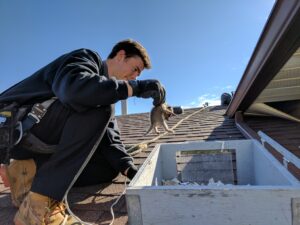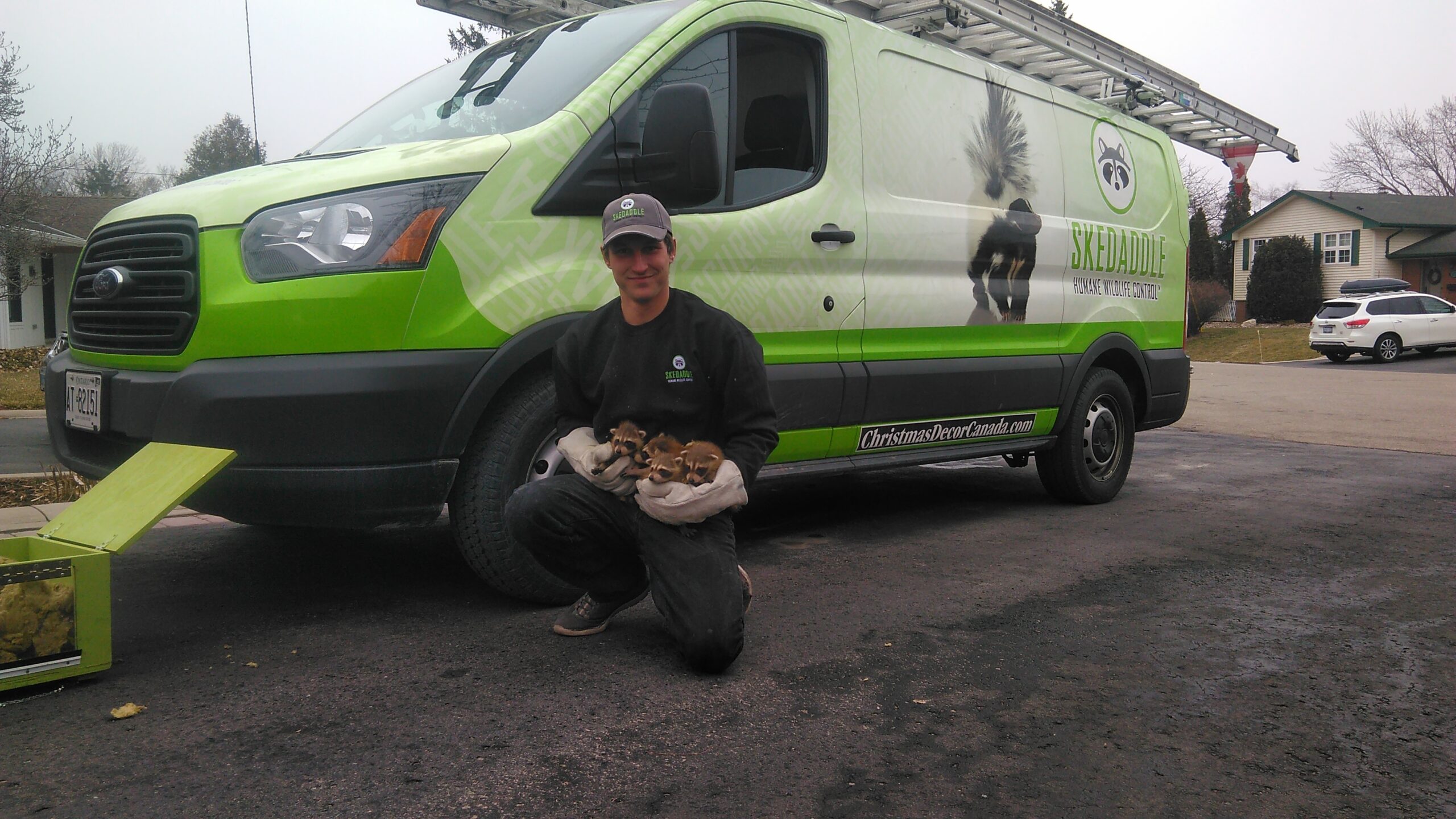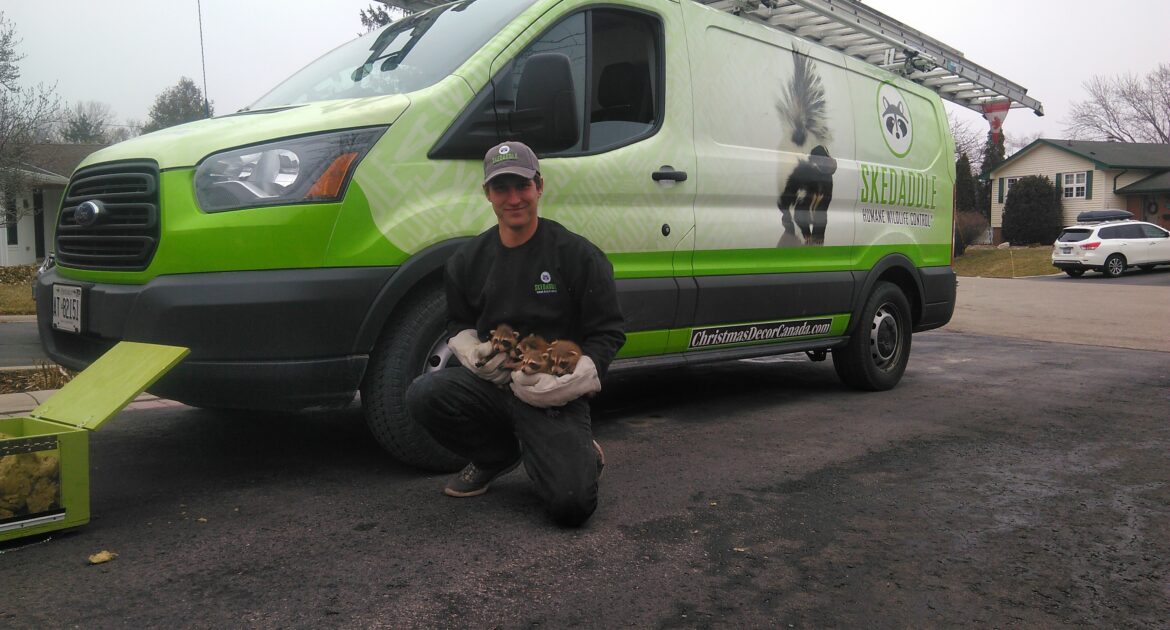If you wake up each morning to the sight of garbage strewn all over your yard, the masked bandit may be up to its wily ways, indicating a raccoon presence on your property. Does it mean you need to consider how to get rid of raccoons or just do a better job securing your bins? We explore raccoon behaviour and discuss signs Durham residents should look for that these critters are making themselves comfortable in your home and when you’re most likely to detect them.
Why You Need To Know How To Get Rid of Raccoons
If you see a raccoon, it may be challenging to ignore its cute face or amusing behaviours. While it’s great to see them out in nature, where they perform essential roles in our ecosystems — they can help keep other critters like mice at bay, for instance — you don’t want them hanging out in your attic.
As adorable as they are, they can do significant damage to your home. They have strong and dexterous paws and often enlarge small holes to make entrance into your attic easier. Once inside, they often rip apart insulation, gnaw or claw structural wood, and chew the wiring.
Raccoons also transmit several diseases through their urine and feces. The raccoon roundworm causes baylisascaris infection, a condition you, your family or your pets can contract if they come in contact with raccoon feces. These critters also carry rabies, making it essential to contact professionals for raccoon removal.
What You Need To Know About Raccoon Behaviour
Raccoons mate between January and June, with activities typically peaking around February. Mothers give birth from April through late summer. Females look for safe dens to give birth and raise their young. Newborn kits are helpless, but mama still must leave them in their nest while she heads out to feed. Your attic is a perfect environment, as it offers protection from predators and the elements.
After birth, raccoons nurse for two to three months and can typically forage on their own by five months. However, raccoon families usually stick together for around a year, although some youngsters may disperse a little sooner. When fall approaches, the raccoons seek warm dens to shelter them during the cold winter months, during which they spend much of their days in a state of torpor. In addition to the birthing months, autumn is a time to look for signs of raccoon houseguests.
When You Need To Find out How To Get Rid of Raccoons
An adult male raccoon can weigh in at an impressive 35 pounds. While these critters are agile, they don’t necessarily move on soft feet. One of the first indications you may need help with raccoon removal is hearing thumping and other loud noises in your attic.
In addition to hearing the heavy-bodied movements and raccoon activities overhead, keep your eyes and ears peeled for the following signs of raccoon houseguests:
-
You wake up to find that your garbage is overturned and ransacked daily.
-
You notice tracks (raccoon tracks resemble tiny human hands) and scratches around your property.
-
You hear “raccoon calls.” Raccoons make a purring sound. Snarling and growling sounds are also attributed to raccoons.
- You see raccoon droppings on your property. Raccoon droppings appear crumbly and flat toward one end, and sometimes you can see traces of food in them. These droppings often carry dangerous bacteria and can be found at the base of trees since the animals habitually defecate before climbing. Indoors, you will find the droppings some distance away from the den as raccoons have catlike bathroom habits.
- You spot feces and urine during a trip up to the attic.
- You notice a yellow or brown moisture stain on your ceiling.
- You detect strong odours you can’t find the source for.
- You notice structural damage such as holes around your soffits, fascia and vents or on the roof.
- You experience electrical issues or trouble with your HVAC system.
- You see a melted area of snow on your roof in the winter.
Skedaddle’s team knows how to get rid of raccoons for good using humane exclusion techniques.
Why You Need Professional Raccoon Removal Instead of Using DIY Techniques
You may wonder how to scare raccoons away if you have them on your property. While loud noises such as clapping or yelling and bright lights are options when you find a critter rummaging through your trash, you don’t want to meddle with wild raccoons that have taken refuge on your property. Not only do they carry diseases, but you might also put yourself in physical danger.
If you opt to confront a wild raccoon, you may get hurt, especially if this raccoon is a nesting mother. Though not typically aggressive, raccoons may become so if they feel cornered or threatened. Additionally, like many other wild animals, nursing raccoons are very protective of their young and will become aggressive if threatened.
It is important to note that a raccoon found indoors between spring and early fall is possibly nursing a litter of baby raccoons. If you scare off the mother or close entry points while she is out foraging, you may trap little ones inside with no means of survival.
Where To Turn When You Need To Know How To Get Rid of Raccoons Humanely

For expert humane raccoon removal, Durham residents can turn to Skedaddle. We begin by assessing your property and providing you with an itemized estimate. Our technicians then remove raccoons using humane techniques that protect the animals and keep families together. They also clean and clear any contaminated surfaces and materials, so you aren’t left with a mess.
Once they are certain all the animals are out, they seal all potential entry points to prevent future incursions. Our technicians understand how to get rid of raccoons using techniques that keep the critters and little ones safe. If you discover raccoons on your property or want a professional assessment, get in touch with us today to schedule services in Durham.




